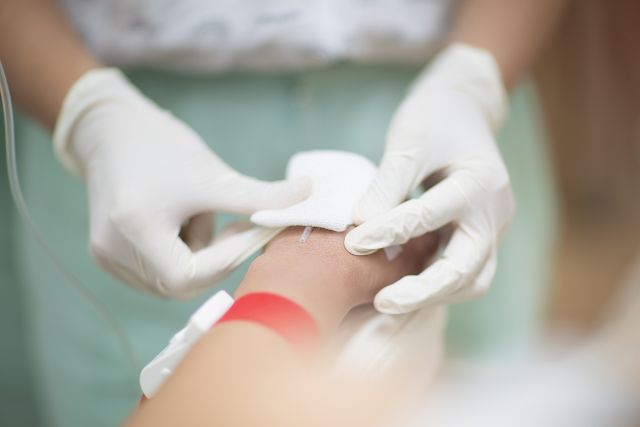Thyroid eye disease (TED) is an autoimmune disorder, a health condition where the immune system attacks and damages healthy cells and tissues. With TED, the immune system attacks the muscles and fatty tissues around the eyes that help the eyeballs maintain their proper alignment and help give that part of the face its structure.
Because TED begins with the immune system, it helps to understand what is happening with the immune system when a person has an autoimmune disease, when a person has TED, and how some treatments for TED act on the immune system.
Antibodies and autoantibodies
You can think of the immune system as the body’s defense system. One of this system’s most important functions is to neutralize any harmful substances that enter the body, such as viruses, illness-causing bacteria, other pathogens, irritants, or toxins.
The immune system neutralizes harmful substances by producing proteins called antibodies. Antibodies bind to a harmful substance, and either destroy that substance or help white blood cells destroy it. Antibodies are created to neutralize specific threats—the immune system will make one specific type of antibody to fight an infection with a cold virus, and another to fight off a bacterial infection.
Some autoimmune disorders occur because the immune system produces autoantibodies. Autoantibodies function similarly to antibodies, but instead of binding to harmful pathogens, autoantibodies bind to healthy tissues.
In the case of TED, the immune system produces autoantibodies that target the cells that make up the soft tissues around the eyes.
TED and Grave’s disease
TED often occurs alongside an autoimmune disease called Graves’ disease. When a person has Graves’ disease, the immune system produces autoantibodies that target the hormone-producing thyroid gland, located in the front of the neck.
Autoimmune disorders are extremely complex and medical researchers do not have a full understanding of what’s happening in the body when a person has TED and/or Graves’ disease. It’s believed that the proteins found in the thyroid and the orbital tissues are similar enough in structure that autoantibodies can attack both, at least in cases where people have both conditions.
Medications that act on the immune system
While researchers have not fully unraveled the exact mechanisms at work when a person has TED, they have identified several biologic therapies that have the potential to treat TED. One biologic medication for TED is available, and others are under development. Biologic therapies are drugs that act on specific parts of the immune system and disrupt autoimmune activity.
For example, the biologic therapy that is approved for treating TED works by blocking cell receptors called insulin-like growth factor-1 receptors (IGF-1Rs):
- Large numbers of IGF-1Rs are found on the cells that make up orbital tissues in people who have TED.
- TED autoantibodies can attach to these cell receptors, which causes the immune system to attack orbital tissue cells.
- Blocking these cell receptors means fewer autoantibodies can attach.
- This helps prevent the immune system from damaging orbital tissue.
Keep in mind that this is a simplified explanation of a very complex biological process—and also a process that is not yet fully understood.
While biologic therapy is a newer approach to treating TED, drugs that act on the immune system have been a mainstay of treatment for many years. Moderate-to-severe TED can be treated with corticosteroids, medications that reduce inflammation and also suppress immune system activity. TED has also been treated with immunosuppressive drugs.
Treating TED
As TED damages the orbital tissues, the eyes can bulge forward. This causes the eyes to appear wide open and staring at all times. This is one of the most emotionally and psychologically distressing symptoms of TED—and one of several reasons why mental health should be a focus of treatment.
TED also causes a number of physically uncomfortable symptoms. The eyes can feel dry or gritty, watery, and sensitive to light. The eyes can be painful or difficult to move. Vision can become blurred, or a person may experience double vision as the eyes become misaligned.
Left untreated, TED symptoms can get worse, leading to more discomfort, more vision problems, and a lower quality of life. If you or a loved one has TED, seek treatment. A healthcare provider can build a treatment plan that helps address your symptoms and needs as a person living with TED, and advise you on the latest treatment options available.






